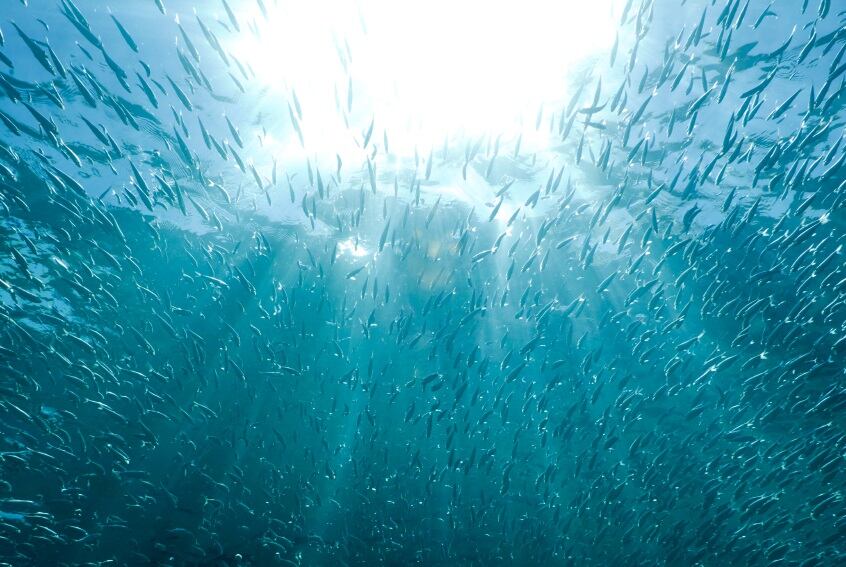The Friend of the Sea (FOS) certification organization has certified several individual harvesters of anchovies in Peru. The most recent company to to complete a certification renewal audit is Pesquera Hayduk. The company’s fleet catches anchovies by means of purse seine method and in compliance with the Marine Protected Areas regulation. Bycatch is minimal and does not include any IUCN red list species.
Pesquera Hayduk also says it has invested in cleaner technologies that includes the installation of washing towers that attenuate the effects of gas emissions and the transition to natural gas and LPG.
“We are very proud to have achieved the Friend of the Sea certification renewal, which reinforces our environmental efforts,” said Kief Benites, technical manager at Pesquera Hayduk.
The Friend of the Sea website lists five other fishing companies that operate in Peru that are currently in certification. Friend of the Sea says it follows FAO guidelines for sustainable fishing operations when it certifies fisheries. FAO defines these as “ecolabelling schemes that are designed to certify and promote labels for products from well-managed marine capture fisheries and focus on issues related to the sustainable use of fisheries resources.”
No MSC certification
While FOS has signed off on some of the operations in Peru, another major fisheries certifier—the Marine Stewardship Council (MSC), which looks at entire fisheries rather than individual companies—has not. MSC was the top-ranked certification scheme in a report commissioned by the World Wildlife Fund and conducted by a group known as Accenture Development Partnerships. While the fishery was said in 2013 to be ‘well placed’ to earn MSC certification, this has yet to take place.
“In order to get MSC certification you have to get the government, the industry and all the other relevant stakeholders aligned. In the past in the case of Peru there has always been one holdout. There is a new government in place now and they seem supportive,” Adam Ismail, executive director of GOED (the Global Organization of EPA and DHA Omega 3s) told NutraIngredients-USA.
Elena Conterno, president of SNP (Sociedad Nacional de Pesquería) said the Peruvian government has cooperated with MSC, though the fishery has not yet moved forward with the formal certification process.
“Although being the anchovy fishery recognized as having good management, Peruvian government and industry are committed to improving our fishery management. Recently a protocol for establishing the fishing quota was approved,” she said.
“As our association has stated at IFFO 2016, (the recent meeting of the international marine ingredients group) we will undertake a Fishery Improvement Program in order to adequately meet the FAO ecolabelling guidelines. We already have a draft, which will undergo a consultation process during December 2016 and January 2017. We expect to execute the FIP during 2017 and 2018,” Conterno added.
Long history of management

The lack of an MSC certification should not be taken as a sign of impending doom. The anchovy fishery has been conducted in an intensive manner for at least 60 years. It took its first big technological leap when the sardine fishery off the coast of California collapsed in the 1950s and those boats were available to Peruvian entrepreneurs for a song.
The fishery is vulnerable to periodic El Niño events, however, when the eastern Pacific warms and interrupts the cold water upwelling system that drives the fishery’s incredible productivity. In warm water years the anchovy population is significantly depressed, but Conterno said Peruvian fisheries officials have enough experience and have gathered enough data to successfully manage their way through those periodic crises.
“In the Peruvian coast (region 1+2) El Niño 2014-2015 was technically classified as “Strong”, without becoming "Extraordinary", as happened in the years 1982- 1983 and 1997- 1998. It was stronger in the center of the Pacific than in our coasts. Its impact on the anchovy was mild. Management has been very cautious in these years which implied very low quotas and even no season in 2014,” she said.
“The biomass of anchovy in 2014- summer was 6.14 million tons, in 2015 it was 9.04 million tons and in summer 2016 it was 7.28 million tons.This shows that the combination of El Niño plus good management has implied no aggregate impact in the anchovy biomass. We look forward to a good fishing year in 2017,” she said.
